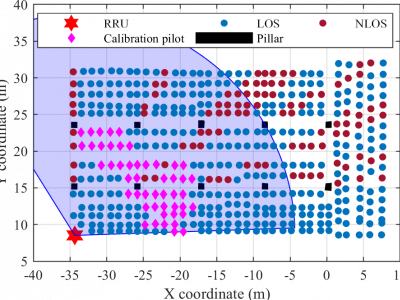5G
As discussions around 6G begin, it is important to carefully quantify the spectral efficiency gains actually realized by deployed 5G networks as compared to 4G through various enhancements such as higher modulation, beamforming, and MIMO. This will inform the design of future cellular systems, especially in the mid-bands, which provide a good balance between bandwidth and propagation.
- Categories:
 162 Views
162 Views
5G Network slicing is one of the key enabling technologies that offer dedicated logical resources to different applications on the same physical network. However, a Denial-of-Service (DoS) or Distributed Denial-of-Service (DDoS) attack can severely damage the performance and functionality of network slices. Furthermore, recent DoS/DDoS attack detection techniques are based on the available data sets which are collected from simulated 5G networks rather than from 5G network slices.
- Categories:
 1372 Views
1372 ViewsDataset Description:
Based on some real-world events, the dataset offers a synthetic representation of 5G network states and metrics during a high traffic event, such as a major sports gathering in a city. Each row corresponds to a unique record capturing the attributes of the network at a particular moment, and each column corresponds to a specific feature or attribute.
Significance:
- Categories:
 1008 Views
1008 ViewsDataset: IQ samples of LTE, 5G NR, WiFi, ITS-G5, and C-V2X PC5
Thes dataset comprises IQ samples captured from ITSG-5, C-V2X PC5, WiFi, LTE, 5G NR and Noise. Six different dataset bunches are collected at sampling rates of 1, 5, 10, 15 , 20, and 25 Msps. In each dataset cluster, 7500 examples are collected from each considered technology. The dataset size at each considered sampling rate is 7500 X M, where M can be 44, 220, 440, 660, 880, and 1100 for a sampling rate of 1, 5, 10, 15 , 20, and 25 Msps,respectively.
- Categories:
 1762 Views
1762 ViewsThe advancements in the field of telecommunications have resulted in an increasing demand for robust, high-speed, and secure connections between User Equipment (UE) instances and the Data Network (DN). The implementation of the newly defined 3rd Generation Partnership Project 3GPP (3GPP) network architecture in the 5G Core (5GC) represents a significant leap towards fulfilling these demands. This architecture promises faster connectivity, low latency, higher data transfer rates, and improved network reliability.
- Categories:
 2061 Views
2061 ViewsChannel frequency response (CFR) dataset used for "In-Situ Calibration of Antenna Arrays for Positioning With 5G Networks" paper (IEEE Transactions on Microwave Theory and Techniques, in print, doi: 10.1109/TMTT.2023.3256532, preprint link: https://arxiv.org/abs/2303.04470).
- Categories:
 1618 Views
1618 Views
Fifth Generation 5G cellular network users are increasing exponentially, where 5G coverage is a challenge for global telecommunications to provide end-users with maximum Quality of Experience (QoE). 5G technology New Radio (NR) is developed to address high bandwidth, low latency and massive connectivity requirements of enhanced Mobile Broadband (eMBB) compared to Fourth Generation (4G) Long-Term Evolution (LTE).
- Categories:
 992 Views
992 Views
This dataset includes real-world time-series statistics from network traffic on real commercial LTE networks in Greece. The purpose of this dataset is to capture the QoS/QoE of three COTS UEs interacting with three edge applications. Specifically, the following features are included: Throughput and Jitter for each UE-Application and Channel Quality Indicator (CQI) for each UE. The interactions were generated from a realistic network behavior in an office by developing multiple network traffic scenarios.
- Categories:
 1971 Views
1971 Views
Predicting the behavior of real-time traffic (e.g., VoIP) in mobility scenarios could help the operators to better plan their network infrastructures and to optimize the allocation of resources. Accordingly, we propose a forecasting analysis of crucial QoS/QoE descriptors (some of which neglected in the technical literature) of VoIP traffic in a real mobile environment.
- Categories:
 1310 Views
1310 ViewsThe dataset was collected by performing uplink/downlink throughput measurements in Munich, Germany. The user side device was a vehicle with roof-mounted antenna (approx. 1.5 m height), and on the network side was a base station antenna mounted at the top of a building (height of the antenna with respect to the ground: 21 m). The measurements were collected at the center frequency of 3.41 GHz, with 40 MHz of bandwidth, with antenna gain of 15.5dBi (5dBi) at the base station (vehicle) side. The maximum throughput in the uplink was 40 Mbps.
- Categories:
 467 Views
467 Views




